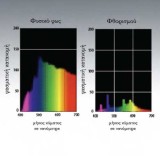Supervisor:
Architectural Technology
2004
This research presents the theory that is related with the visual perception and the way that lighting influences human. In particular, this study refers to the function of the visual and perceptual system, that is based on the principles of perceptual constancy, and also points that through these factors lighting conditions affect the person’s physiology and psychology. The study focus in the effect of daylighting and refers to researches that examine how lighting conditions modify the feeling, the behavior and the performance of individuals .
In the next part of this paper there is a reference about the techniques of representation of space. This reference begins with a historical review in the tools of representation in the past.the pastpresantation spaces The report continuous by looking into the contemporary tools and software of 3 dimensional visualization/simulation and are mentioned ways that images can be produced as the result of a rendering procedure. It is also pointed here the importance of utilisation of simulation software to achieve accuracy in the architectural visualisation, how these softwares operate, and it is also examined the quality of the results and their faculty to provide reliable information on the behavior of light at his interaction with masses and the surfaces of the objects. Still, this study examins the potentiality of tools of representation for the precise estimation of distribution of light and luminance.
In the end, there are presented simulations of spaces with real distribution of luminance and it’s taking place an attempt of comparison between real and rendered images and between simulation softwares, based on the degree of accuracy in the process of producing rendered images.
